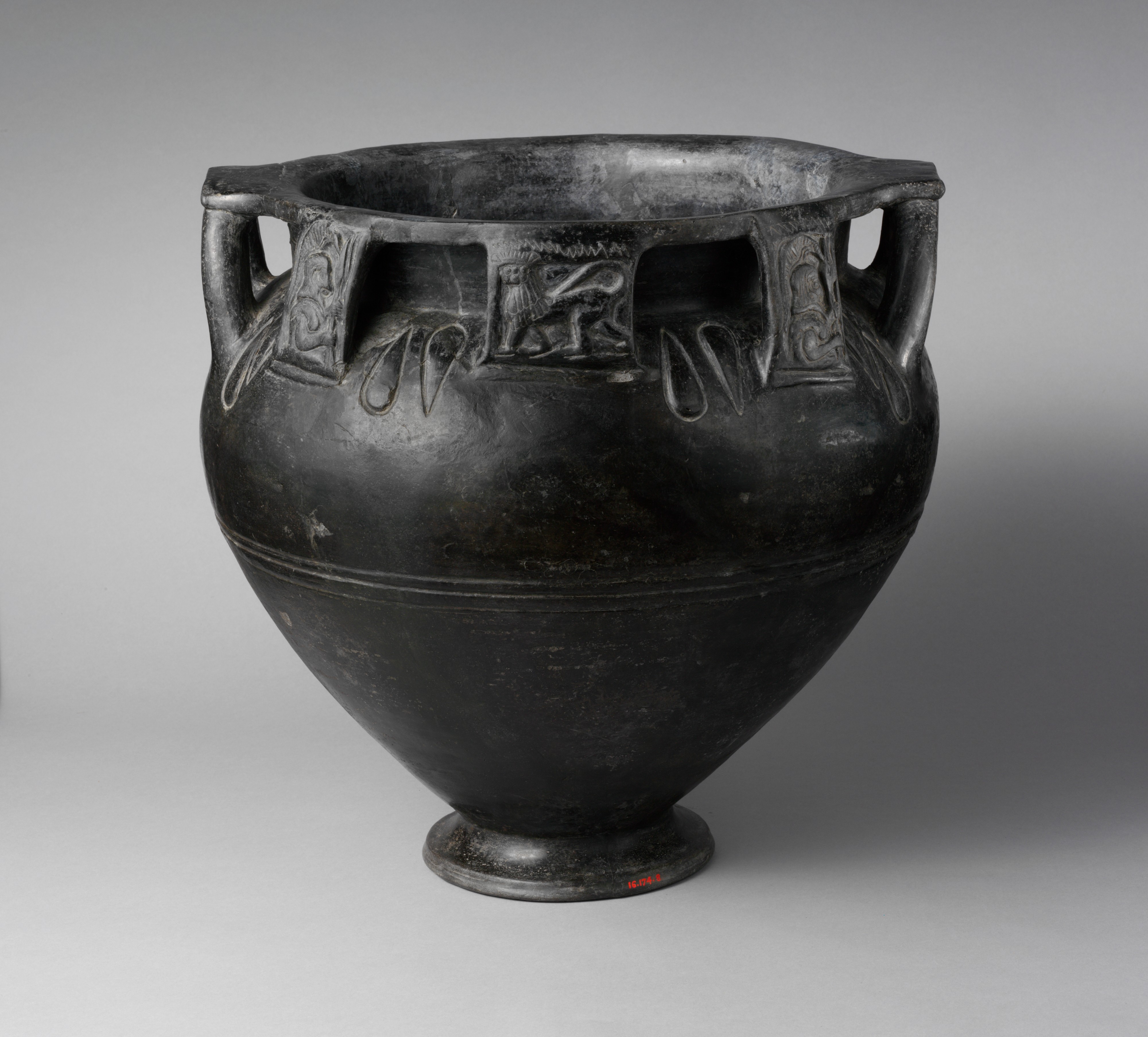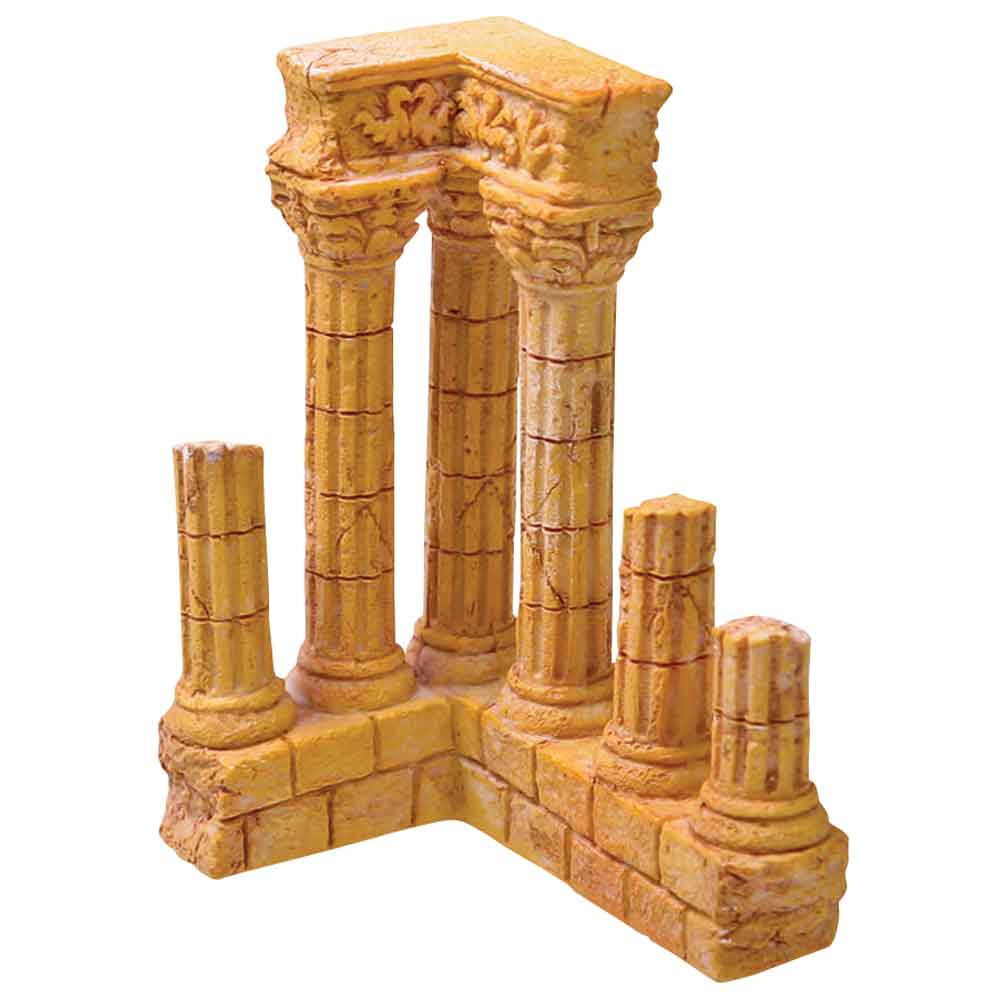

In revenge, Hephaistos fashioned a throne that held Hera fast when she sat on it.

Because he was born lame, his mother cast him out of Olympos.

Hephaistos, the divine smith, was the son of Hera and Zeus. The subject, which encompasses both sides of the vase, is the return of Hephaistos to Mount Olympos, the home of the gods. (On red-figure vases, the symposium itself was often depicted.) This krater is of exceptional significance because it is one of the first on which wine, women, and song are presented, albeit in a mythological guise. In black-figure vase-painting before the last quarter of the sixth century B.C., the decoration of large, elaborate kraters tended to be mythological. An essential piece of equipment for the symposium was the vase in which the wine was diluted with water and from which it was served. Even more worthy of emphasis, however, is the importance of the symposium as an institution that permitted citizens to gather, to transact business, and-as Plato's dialogue makes clear-to engage in serious discussion. For over a century, representations on vases document that wine, women, and song were central ingredients. Obverse, Hephaistos on mule among satyrs and maenads Reverse, Dionysos among satyrs and maenads The symposium, conventionally interpreted as a drinking party, was a well-established feature of Greek-particularly Athenian- society.


 0 kommentar(er)
0 kommentar(er)
